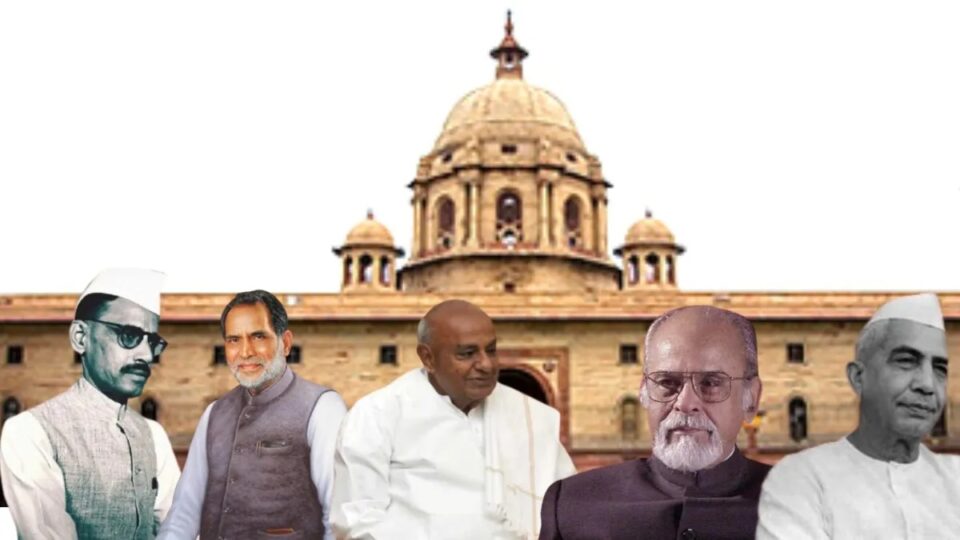India’s political history is filled with landmark elections, coalition twists, and sudden power shifts. While some Prime Ministers have served long and influential terms, others held office only for a brief period — sometimes just days. These short tenures often came at moments of political instability, fractured mandates, or internal party conflicts, making them fascinating chapters of India’s democracy. In this detailed blog, we explore the shortest-serving Prime Ministers in India, why their terms were so brief, and what these episodes reveal about the country’s political landscape.
Prime Ministers in India
Discover the complete list of the shortest-serving Prime Ministers in India and learn about their brief yet impactful tenures in office.
1. Atal Bihari Vajpayee – 13 Days (May 1996)
Atal Bihari Vajpayee’s first term as Prime Minister is the shortest in India’s history. After the 1996 general election, the BJP emerged as the single-largest party, prompting the President to invite Vajpayee to form the government. However, the BJP lacked the numbers to secure a majority in the Lok Sabha. Despite efforts to win support, Vajpayee resigned after just 13 days when it became clear he would lose the confidence vote.
Tenure: 16 May 1996 – 28 May 1996 (13 days)
2. Charan Singh – 170 Days (July 1979 – January 1980)
Charan Singh became Prime Minister after breaking away from the Janata Party and securing outside support from the Congress. However, before he could even face a confidence vote, Congress withdrew its support, leaving his government without a majority. As a result, he resigned after 170 days. His government never got to prove its majority in Parliament.
Tenure: 28 July 1979 – 14 January 1980 (170 days)
3. H. D. Deve Gowda – 324 Days (June 1996 – April 1997)
After Vajpayee stepped down in 1996, H. D. Deve Gowda emerged as a consensus candidate of the United Front coalition, supported from the outside by the Congress. His tenure ended when Congress withdrew its support, citing poor coordination and dissatisfaction with governance. Gowda resigned nearly 10 months after taking office.
Tenure: 1 June 1996 – 21 April 1997 (324 days)
4. I. K. Gujral – 332 Days (April 1997 – March 1998)
I. K. Gujral succeeded Deve Gowda as the next United Front Prime Minister. His government, too, relied on Congress support. The friction began when the Jain Commission report suggested DMK links to the Rajiv Gandhi assassination. Congress demanded DMK’s removal from the coalition, but Gujral refused. Congress then withdrew support, forcing him to resign.
Tenure: 21 April 1997 – 19 March 1998 (332 days)
5. Morarji Desai – 857 Days (March 1977 – July 1979)
Though not extremely short, Morarji Desai’s tenure was the briefest among Prime Ministers who came to power with a clear majority. After the Emergency, the Janata Party won decisively in 1977, but internal conflicts between senior leaders like Charan Singh and Jagjivan Ram destabilized the government. Desai eventually resigned after losing majority support.
Tenure: 24 March 1977 – 28 July 1979 (857 days)
6. Gulzarilal Nanda – Two Short Interim Terms
Gulzarilal Nanda served as acting Prime Minister twice, both times after the death of sitting Prime Ministers. His role was transitional, ensuring smooth governance until a new leader was elected.
First Term – 13 Days (1964)
After Jawaharlal Nehru’s death, Nanda served briefly until Lal Bahadur Shastri took over.
Tenure: 27 May 1964 – 9 June 1964
Second Term – 13 Days (1966)
Following Shastri’s sudden demise in Tashkent, Nanda again stepped in as interim PM until Indira Gandhi became Prime Minister.
Tenure: 11 January 1966 – 24 January 1966
What These Short Tenures Reveal About Indian Politics
1. Coalition Complexity
Most short-serving Prime Ministers came during an era of unstable coalitions (1979–1998). With multiple parties and shifting alliances, governments often depended on fragile external support.
2. The Role of the President
In times of political uncertainty, the President’s decision to invite the leader of the single-largest party or coalition was crucial. Vajpayee’s 13-day government is the best example of this.
3. Shifting Party Loyalties
Political fragmentation, defections, and factionalism played major roles in destabilizing governments—especially in the late 70s and 90s.
4. Strength of Strong Mandates
Short tenures sharply contrast with long-serving PMs such as Jawaharlal Nehru or Indira Gandhi. They show the importance of stable majorities for effective governance.
Complete List: Shortest-Serving Prime Ministers of India
| Prime Minister | Tenure | Duration | Reason for Short Term |
|---|---|---|---|
| Atal Bihari Vajpayee (1st term) | 1996 | 13 days | Could not prove majority |
| Gulzarilal Nanda | 1964 & 1966 | 13 days each | Interim PM after PM’s death |
| Charan Singh | 1979–1980 | 170 days | Lost Congress support before trust vote |
| H. D. Deve Gowda | 1996–1997 | 324 days | Congress withdrew support |
| I. K. Gujral | 1997–1998 | 332 days | Congress withdrew support over DMK issue |
| Morarji Desai | 1977–1979 | 857 days | Janata Party internal conflict |
Final Thoughts
Short tenures are more than historical footnotes — they reflect crucial turning points in Indian politics. From coalition collapses to sudden transitions, these brief leadership periods show how complex and dynamic India’s parliamentary democracy can be. Understanding these political episodes gives us valuable insight into how stable governments are formed, sustained, and sometimes lost within months.

